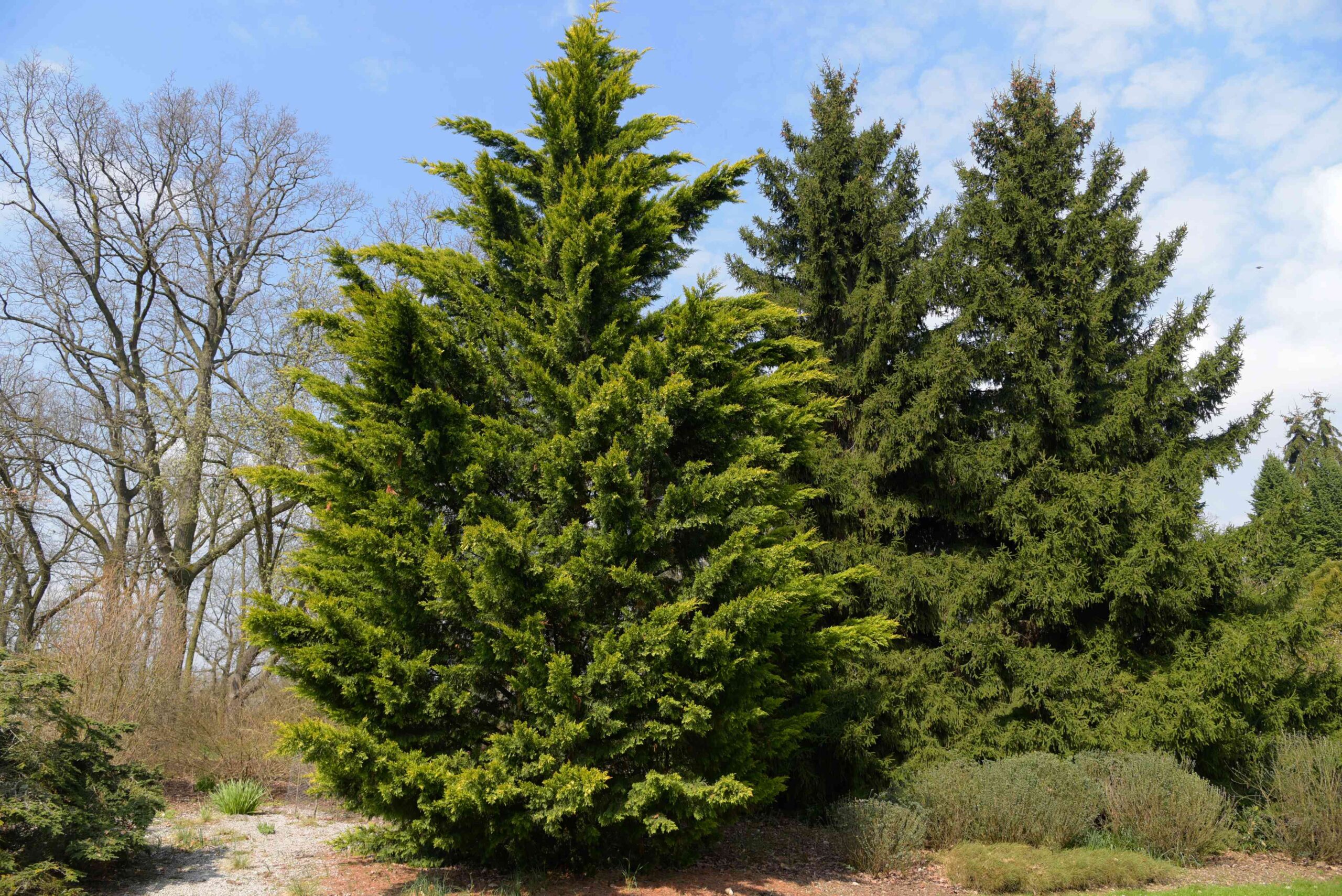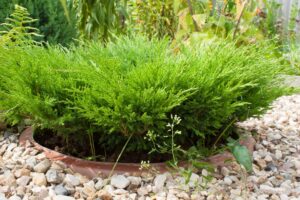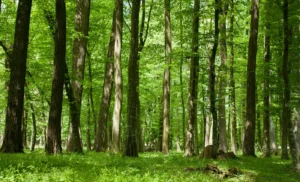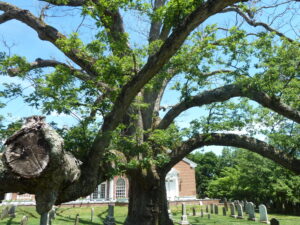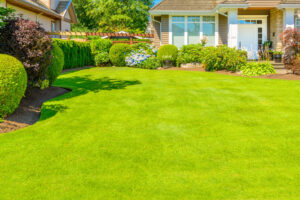The Art of Conifer Tree Height Reduction: A Complete Guide
When your towering evergreen starts blocking views or casting too much shade, it might be time to consider reducing its height. Conifer trees add year-round beauty to landscapes, but their vertical growth can sometimes become problematic. This comprehensive guide will walk you through everything you need to know about safely and effectively reducing the height of your conifer trees.
Understanding Conifer Growth Patterns
Before you grab your pruning tools, it’s essential to understand how conifer trees grow. Unlike deciduous trees, most conifers grow from a central leader (the main upright stem) with lateral branches forming around it. Their growth occurs primarily from the tips of branches and the top of the tree.
Conifers generally fall into two growth pattern categories, which directly impact how you should approach height reduction:
Whorl-branched conifers include pines, spruces, and firs. These trees have branches that grow in distinct whorls or circles around the trunk at fairly regular intervals. They typically have a strong central leader and a pyramidal or conical shape.
Random-branched conifers include arborvitae, junipers, yews, and cedars. These trees have branches that emerge more randomly along the trunk rather than in distinct whorls. Their growth patterns can be more shrub-like or columnar.
According to the USDA Forest Service, most conifers grow between 6 inches and 2 feet annually, depending on the species and growing conditions. Understanding your specific conifer’s growth rate will help you determine how frequently height reduction might be necessary. For more detailed information on conifer growth rates, you can visit the USDA Forest Service website.
When to Reduce the Height of Your Conifer
Timing is crucial when it comes to pruning conifers. The best time for most major conifer pruning, including height reduction, is during the dormant season in late winter or early spring before new growth begins. However, light pruning can be done almost any time of year.
You should consider reducing the height of your conifer when:
Your tree is encroaching on power lines or structures. This represents a safety hazard that should be addressed promptly.
The tree is blocking significant sunlight from your home or garden areas. Excessive shade can impact your energy bills and the health of other plants.
Your conifer is obstructing important views from your property. That mountain vista you paid a premium for deserves to be visible.
The tree is becoming disproportionately tall compared to its surroundings, creating an unbalanced landscape appearance.
You’re concerned about potential falling hazards during storms. Reducing height can minimize risk in severe weather.
However, be aware that some municipalities have regulations regarding tree pruning, especially for large specimens. Before making significant cuts, check with your local government offices to ensure compliance with any existing ordinances.
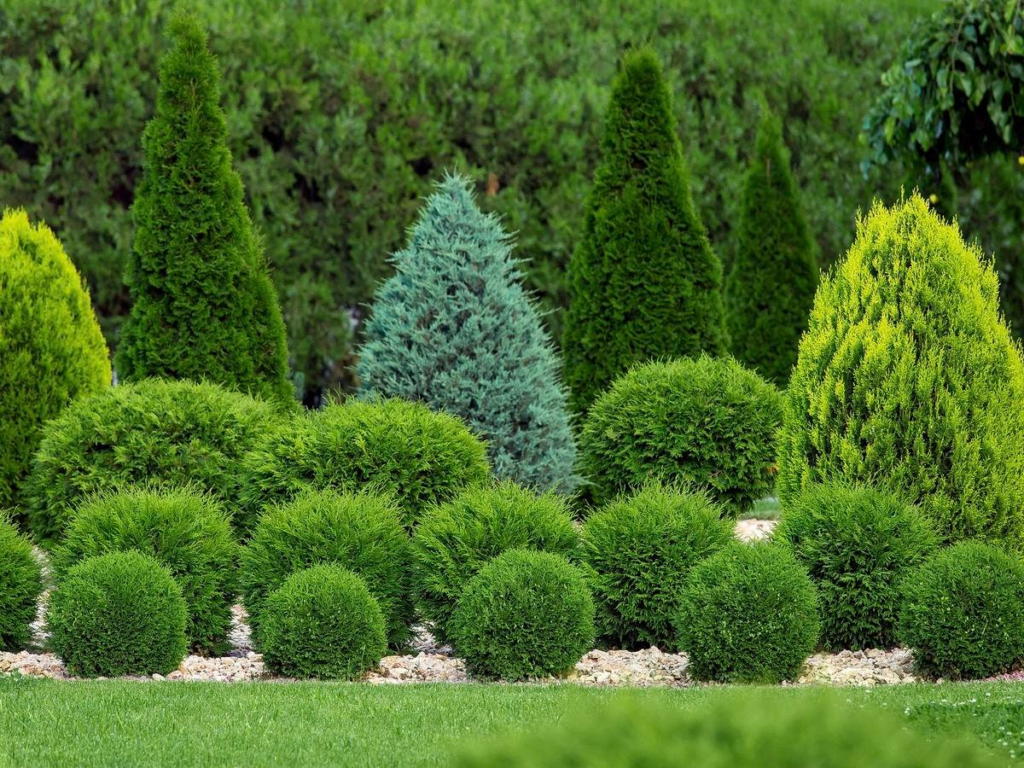
Methods for Reducing Conifer Height
There are several approaches to reducing the height of a conifer, each with different implications for the tree’s health and appearance. The method you choose should depend on the tree species, its current health, and your long-term goals for the tree.
Candle Pruning for Pines
Pine trees produce new growth in spring that resembles “candles” – elongated buds that will become that year’s new growth. Candle pruning involves:
- Identifying the new growth candles in spring
- Pinching or cutting these candles by about half their length
- Performing this across the top of the tree to control height
This method is ideal for pines because it allows for precise control of new growth without creating unsightly brown stubs. When done consistently over several years, candle pruning can effectively manage a pine’s height while maintaining its natural appearance.
Crown Reduction
For many conifers, a technique called crown reduction can effectively lower the tree’s height:
- Identify the central leader (main trunk extending upward)
- Select a lateral branch that’s at least one-third the diameter of the leader
- Cut the leader back to the point where it joins this lateral branch
- Train the lateral branch to become the new leader by gently securing it in a more upright position if necessary
This approach maintains a more natural appearance while reducing overall height. However, it should be done carefully to avoid leaving the tree with a flat-topped appearance, which can lead to multiple competing leaders.
Topping (As a Last Resort)
Topping involves cutting the tree straight across at a predetermined height. While this immediately reduces height, it’s generally considered a harmful practice for several reasons:
- Creates large wounds that heal slowly and may introduce disease
- Stimulates multiple weak leaders to sprout from the cut
- Destroys the tree’s natural form
- Often results in a bushier, wider tree as it attempts to compensate
- May ultimately kill the tree or significantly reduce its lifespan
The National Park Service explicitly warns against topping, noting that it “creates serious hazards and dramatically shortens the lifespan of trees.” If you must drastically reduce height, consider removal and replacement with a more appropriately sized species instead.
Tools and Equipment You’ll Need
Having the right tools not only makes conifer pruning more effective but also ensures the tree sustains minimal damage. Here’s what you should have on hand:
For Small to Medium Conifers
Hand pruners (secateurs): For branches up to 3/4 inch in diameter Loppers: For branches up to 1.5 inches in diameter Pruning saw: For branches up to 4 inches Extendable pole pruner: For reaching higher branches without a ladder Clean gloves: To protect your hands from sap and sharp needles Safety glasses: To protect your eyes from falling debris
For Larger Conifers
All of the above plus: Sturdy extension ladder: For accessing higher portions Rope and harness system: For safety when working at height Chain saw: For larger branches (requires skill and safety precautions) Drop cloth: For collecting debris
Safety Equipment
Hard hat: To protect from falling branches Non-slip footwear: For stability when climbing or standing on uneven ground First aid kit: For treating minor injuries.

Step-by-Step Guide to Reducing Conifer Height
The following process outlines a safe and effective approach to reducing the height of a conifer while preserving its health and natural appearance:
1. Assessment and Planning
Before making any cuts, thoroughly assess your tree. Identify:
- The central leader
- Major lateral branches
- Overall tree health
- Target height reduction (ideally no more than 20-30% of total height)
Take photos from multiple angles for reference. Mark branches to be cut with brightly colored garden tape to ensure you maintain the proper shape.
2. Preparation
Gather all necessary tools and equipment. Ensure cutting tools are sharp and clean. Disinfect blades with a 10% bleach solution or rubbing alcohol between trees to prevent disease transmission.
Clear the area around the tree of obstacles and valuable plants that could be damaged by falling debris. If working near structures or power lines, consider consulting a professional arborist.
3. Initial Pruning
Begin by removing any dead, diseased, or broken branches. This improves tree health and provides better access to the parts you’ll be shaping.
For whorl-branched conifers (pines, spruces, firs):
- Identify the central leader
- Select a lateral branch one or two whorls down from the top that can become the new leader
- Make a clean cut on the main leader just above where this branch attaches
For random-branched conifers (junipers, cedars, arborvitae):
- Identify the tallest central stems
- Cut these back to a lateral branch that’s heading in a slightly upward direction
- Make cuts at slightly different heights to maintain a natural appearance
4. Shaping and Refinement
After the major height reduction cuts, step back frequently to assess the tree’s appearance from multiple angles. Make smaller cuts to maintain the tree’s natural conical or pyramidal shape.
Avoid creating a flat top, as this appears unnatural and can lead to water collection issues and multiple competing leaders.
Thin out some of the interior branches if necessary to allow light and air circulation, which promotes overall tree health.
5. Clean-up and Aftercare
Collect all pruning debris and dispose of or compost it appropriately. Apply a light mulch around the base of the tree, keeping it away from the trunk itself.
Water the tree thoroughly after significant pruning, as the stress can increase its water needs temporarily.
Comparison of Height Reduction Methods by Conifer Type
The following table provides specific guidance on which height reduction methods work best for common conifer types:
| Conifer Type | Best Reduction Method | Maximum Recommended Reduction | Recovery Time | Special Considerations |
|---|---|---|---|---|
| Pine (Pinus spp.) | Candle pruning | 10-15% annually | 1-2 years | Avoid cutting into old wood with no needles |
| Spruce (Picea spp.) | Crown reduction | 20% maximum | 2-3 years | Only cut branches with green needles present |
| Fir (Abies spp.) | Crown reduction | 15-20% maximum | 2-3 years | Very sensitive to topping, avoid at all costs |
| Arborvitae (Thuja spp.) | Selective heading cuts | 25-30% maximum | 1-2 years | Responds well to pruning but avoid extreme reduction |
| Juniper (Juniperus spp.) | Selective thinning | 20-25% maximum | 1-2 years | Can handle more significant pruning than most conifers |
| Cedar (Cedrus spp.) | Crown reduction | 15-20% maximum | 2-4 years | Slow to recover, prune conservatively |
| Cypress (Cupressus spp.) | Selective thinning | 20% maximum | 2-3 years | Cannot regrow from bare wood |
| Hemlock (Tsuga spp.) | Crown reduction | 15-20% maximum | 2-3 years | Prune during dormant season only |
Potential Challenges and Solutions
Even with careful planning and execution, you may encounter challenges when reducing the height of your conifer. Here are some common issues and how to address them:
Brown Patches After Pruning
Challenge: After pruning, parts of your conifer develop brown, dead-looking areas.
Solution: This often occurs when cuts are made into areas with no needles or active growth. Most conifers cannot regenerate from bare wood. To prevent this:
- Only cut into areas that still have green needles
- Avoid cutting past the green growth into bare branches
- If browning occurs, you may need to prune these areas further back to green growth
Multiple Leaders Developing
Challenge: After reducing height, several competing leaders begin growing from the cut area.
Solution: Select the strongest, most centrally located new shoot to become the new leader. Remove or subordinate competing shoots by cutting them back to lateral branches. This directs the tree’s energy into a single, strong new leader.
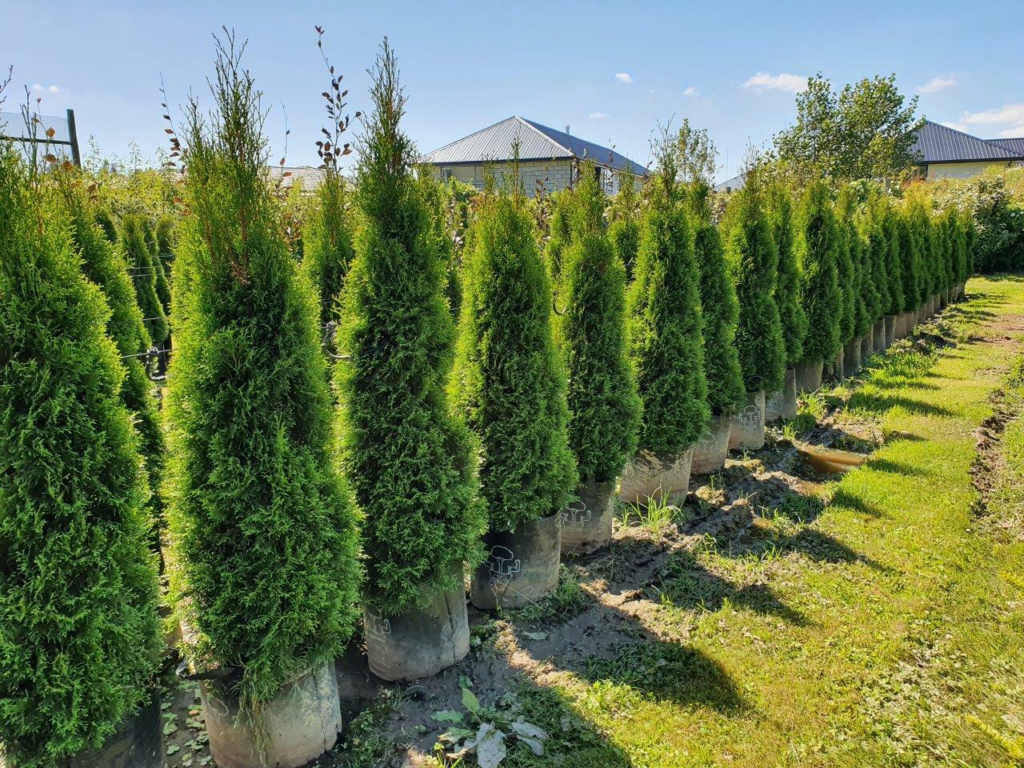
Resin (Sap) Flow
Challenge: Excessive sticky sap flows from pruning cuts.
Solution: This is normal for many conifers, especially pines. The sap is the tree’s natural sealing mechanism. Avoid pruning during times of heavy sap flow (typically spring). Clean tools frequently with alcohol or mineral spirits to prevent sap build-up.
Pest Infestation After Pruning
Challenge: Insects attack the tree after pruning.
Solution: Prune during cooler months when insect activity is lower. Ensure all cuts are clean, and the tree is properly watered after pruning to minimize stress. Consider applying an appropriate insecticide if you notice pest activity increasing after pruning.
Long-Term Maintenance After Height Reduction
Reducing your conifer’s height isn’t a one-time event but rather the beginning of an ongoing maintenance program. Here’s how to maintain your tree after the initial height reduction:
Regular Monitoring
Inspect your tree at least twice yearly—in early spring before new growth begins and in fall to assess the season’s growth. Look for:
- Signs of stress or disease
- New leader development
- Overall shape and symmetry
- Growth rate (measure and record height annually)
Follow-up Pruning
Most conifers will attempt to regain their height after reduction. Plan for annual or biennial maintenance pruning:
- For pines: Annual candle pruning in spring
- For other conifers: Light pruning to maintain shape and control height
- Remove any dead or damaged branches promptly
Fertilization and Care
A properly maintained nutrient program can help your conifer recover from pruning stress:
- Apply a balanced, slow-release fertilizer in early spring
- Maintain a 2-3 inch layer of mulch around the base (not touching the trunk)
- Ensure adequate water during dry periods, especially in the first year after significant pruning
According to the U.S. Department of Agriculture, proper mulching can reduce water loss by up to 25% and help maintain soil nutrients. For more information on proper tree care practices, you can consult the National Institute of Food and Agriculture.
When to Call a Professional Arborist
While many conifer height reduction projects can be handled by homeowners, certain situations call for professional expertise:
The tree is over 15 feet tall, making safe access difficult You need to reduce height by more than 20-30% The tree is near power lines or structures The conifer shows signs of disease or structural issues Local regulations require certified professionals for significant pruning You’re unsure about the proper techniques for your specific species
Professional arborists have the training, equipment, and insurance to safely handle complex pruning jobs. The International Society of Arboriculture (ISA) maintains a directory of certified arborists who specialize in proper tree care techniques.
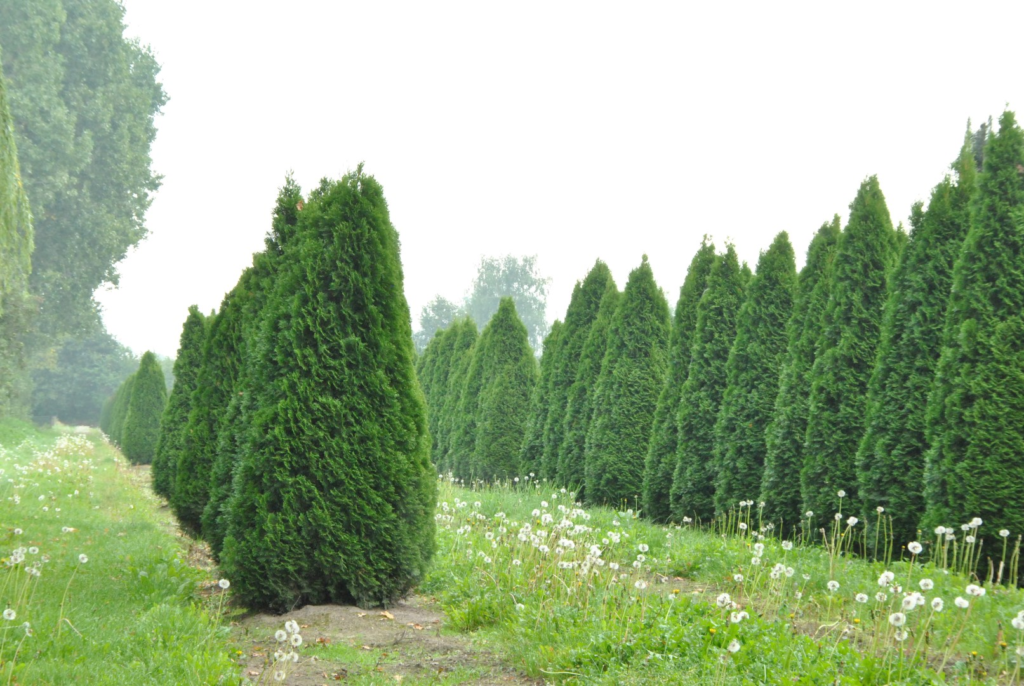
Environmental Benefits of Properly Maintained Conifers
While this guide focuses on reducing conifer height, it’s worth noting the significant environmental benefits these trees provide when properly maintained:
Carbon sequestration: Even reduced-height conifers continue to capture carbon dioxide, helping mitigate climate change.
Wildlife habitat: Conifers provide year-round shelter and food sources for birds and small mammals.
Soil stabilization: The extensive root systems help prevent erosion on slopes and hillsides.
Windbreaks: A row of maintained conifers can reduce wind speed by up to 85%, lowering heating costs and protecting other landscape plants.
Air purification: Conifers filter particulates and pollutants from the air, improving local air quality.
The Environmental Protection Agency recognizes the significant role trees play in improving environmental quality. You can learn more about the environmental benefits of trees at the EPA’s Green Infrastructure website.
Conclusion: Balancing Beauty and Management
Reducing the height of your conifer trees requires careful planning, proper technique, and ongoing maintenance. By following the guidance in this article, you can successfully manage your conifers’ height while preserving their health, beauty, and environmental benefits.
Remember that each species has different tolerance levels for pruning, and the best approach always respects the tree’s natural growth patterns. With patience and proper care, your reduced-height conifers can continue to be stunning landscape features for many years to come.
Rather than viewing height reduction as a one-time fix, consider it part of your long-term relationship with these remarkable trees. The effort you invest in proper pruning techniques will be rewarded with healthier, more manageable, and beautifully shaped conifers that enhance your property without overwhelming it.
